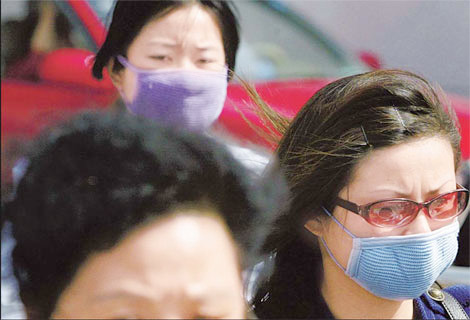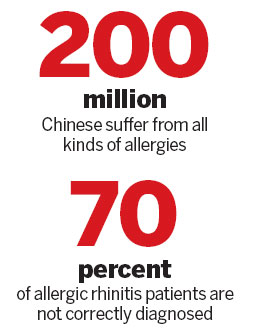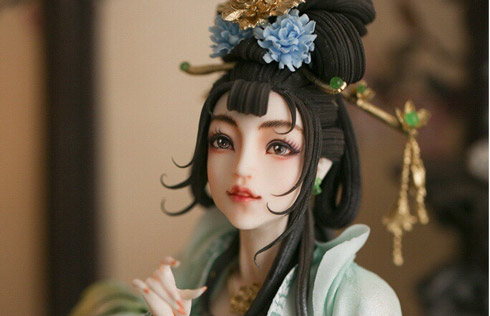Hit and miss diagnoses
 |
|
Allergens outdoors and indoors can trigger severe symptoms for allergic people. An Xin / for China Daily |
Feng Meiguo, 34, was finally able to remove her face mask recently after receiving revised allergy treatment beginning in April 2010. Diagnosed as having serious asthma a couple of years ago, she was put on hormone replacement therapy to help alleviate symptoms such as breathing difficulty and chest tightness. As one of the medication's side effects, Feng, who lives in Zhangjiakou, Hebei province, gained a lot of weight, and, worse, grew heavy body hair, even a "beard".
"I had to wear long sleeved shirts and the face mask even on hot summer days to cover the ugly hair caused by hormones," she says.
"What a pity, she was diagnosed with asthma but the doctor failed to detect the cause - allergy to dust mites and animal fur," says Wang Xueyan, who heads the allergy department of Beijing Shijitan Hospital.
At Shijitan, in April 2010, Feng belatedly took an allergy test that showed she's allergic to animal fur and dust mites, the most common allergens that Chinese are exposed to.
Now, after 18 months of immunotherapy, Feng's asthma symptoms have alleviated and she has quit hormone therapy.
"After another year of treatment, she'll be cured," Wang says.
Along with lifestyle changes caused by urbanization and mounting pressure at work, the prevalence of allergies is on the rise, which seriously affects the quality of life of sufferers, and is expensive to treat.
At least 200 million Chinese suffer allergies of all kinds, says Wang, with dust mites the leading cause, as opposed to pollen in most Western countries.
House dust mites live in all climates even at high altitude, especially in bedrooms and kitchens.
They are usually found in warm and fluffy materials like bedding and carpets, but also toys, air conditioners and old books.
Studies show that among child asthma patients more than 80 percent are allergic to dust mites.
China currently has more than 100 million allergic rhinitis (AR) and 20 million allergic asthma patients, Wang says.
Without medical intervention, half of the AR patients will develop asthma in three to four years, or even chronic obstructive pulmonary disease (COPD), a chronic respiratory condition that can lead to death.
Worldwide, about 300 million people suffer asthma and 250,000 die from the respiratory disease each year, according to the World Health Organization. Most asthma-related deaths happen in low- and lower-middle income countries.
An allergy is a hypersensitivity disorder of the immune system triggered by normally harmless environmental substances such as pollen and dust.
The three most effective ways to treat allergies are avoidance, medication, and immunotherapy, also called an allergy shot.
For the most common dust mite allergy, a course of immunotherapy takes at least two years and costs more than 10,000 yuan ($1,560).
"So far it's not covered by health insurance, so few pay for the treatment unless they develop serious symptoms," Wang says.
Short-term medications are used to help relieve symptoms. However, it's more important to determine the allergen and undertake desensitization therapy.

AR is caused by allergens, which can be found both outdoors and indoors. When AR is caused by outdoor allergens - mold, trees, grass or weed pollens - it is often referred to as a seasonal allergy, or hay fever. AR may also be triggered by allergens found in the home, such as animal dander, mold, or house dust mites.
AR can frequently be confused with common cold symptoms and nearly 70 percent of patients are not correctly diagnosed, let alone properly treated, says Beijing-based allergist Ren Huali.
The number of allergy patients on the right treatment is very small, says Wang, who heads one of Beijing's two allergy departments.
"Related training for doctors, particularly at respiratory, ear/nose/throat, and pediatrics departments are needed to help enhance their capacity in allergy diagnosis and treatment," Wang says.
As such, Wang urges the health authorities and academic institutions to issue clinical guidelines and standards.
In addition to medication and immunotherapy, Chinese allergy sufferers welcome a special "weather forecast" service - the country's first allergy index forecast program which was launched in late June to help allergic patients better avoid potential allergens like pollen.
The index monitoring and forecast program, XSM Allergy Index, co-initiated by the China Meteorological Administration (CMA) and Xi'an-Janssen Pharmaceutical Ltd, is a free public service that provides daily information on the likely appearance of various allergens and ways to limit their effects, on www.chinaweather.com.cn.
Duan Li, the chief service officer of Public Weather at the CMA, says the index includes five degrees, ranging from one, indicating no chance of allergies, to five, indicating a strong chance of allergies. Also, some protection tips are given, such as "wear a mask" or "use a maximum SPF X sun cream".
The service covers 2,348 first and second-tier cities nationwide and forecasts three times daily at 8 am, 12 noon and 8 pm.


















